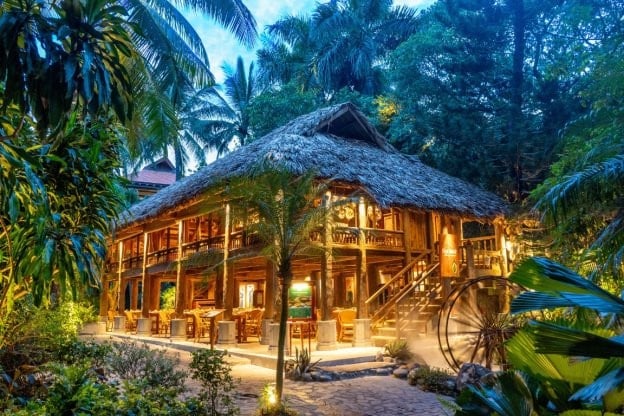
Taya House recreates the journey of the stilt house from the stone land of Muong Khu ( Hoa Binh ).
Unique space
In the middle of the Lagoon garden of Furama Resort Danang , Taya House recreates the journey of a stilt house from the stone land of Muong Khu (Hoa Binh) to the coastal city.
The project was initiated and led by Mr. Nguyen Duc Quynh - General Director of Bac My An Tourist Area Joint Stock Company, with the goal of building a prototype of a highland stilt house, creating a unique cultural space in the heart of the city.
“The name Taya is meant to evoke the Northwest region, where every house and every building is part of a rich and colorful cultural and historical story…”, Mr. Quynh said.
After more than a year of searching, the Project Board considered many stilt houses in different areas, from the Northeast to the Northwest... Finally, a stilt house of the Muong people in Hoa Binh was chosen because it fully met the criteria of cultural, legal, aesthetic and technical factors.
The entire structure of the house made of rosewood and ironwood - durable woods associated with the Muong people - was dismantled, transported to Da Nang and completely rebuilt by hand according to the original structure.
In addition to the original reconstruction of the house, Taya House also displays items associated with the daily life of ethnic minorities in the northern mountainous region such as wooden chests - wedding gifts for newlywed couples, hanging lamps of the ethnic minorities...
In particular, through the talented hands of artist Hoang Tuyen - who specializes in painting on the theme of Vietnamese communities and ethnic groups, the traditional costumes of the ethnic groups in the Northwest region including Tay, Thai, Dao, H'mong, Muong, Ha Nhi, Nung, Phu La are vividly depicted in the paintings displayed inside the house.
From the characters' eyes, the scenery, to the colors, everything creates a connection between the exhibition and the audience's emotions.
Reproducing the indigenous pattern system
If at Taya House the pattern system is fully accepted as the original, Zannier Hotels Bai San Ho (Phu Yen) recreates the indigenous pattern system through contemporary architectural language.
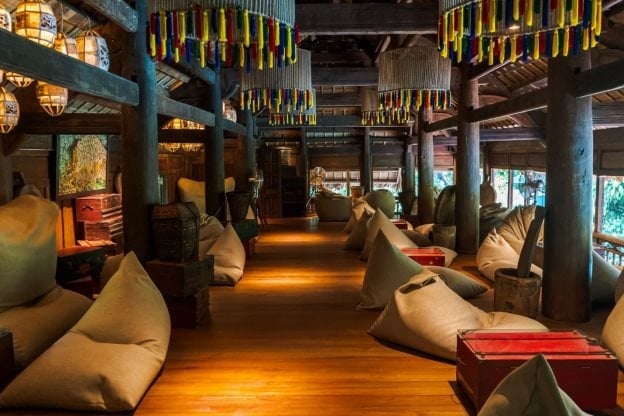
Interior architecture of Taya House.
From the beginning, Arnaud Zannier, CEO of Zannier Hotels, envisioned a resort that would celebrate the natural beauty and cultural richness of the local area. For him, the challenge was not to build luxurious facilities, but to be able to distill the local spirit into architectural solutions.
And Zannier Hotels Bai San Ho has succeeded in showing that luxury can be completely in harmony with local culture. Visitors can easily feel the Vietnamese identity in every arrangement here.
From choosing a location in a relatively “hidden” area in Phu Yen, to handicrafts crafted by local people and especially the architecture inspired by ethnic minority areas.
Typically, the Ede long house, a common living place for many generations, which can be expanded when female members get married, was chosen as a model for hillside villas.
Or the Vietnamese restaurant Ba Hai with its 9 meter high ceiling is also inspired by the Ba Na communal house, creating a spacious space with a strong local imprint.
Not only exploiting architecture, Zannier Hotels Bai San Ho also cleverly incorporates ethnic patterns into the spaces, creating a resort that is both sophisticated and rich in depth.
The project is a testament to the holistic design philosophy, where architecture not only builds but also fully recreates the indigenous spirit.
To keep patterns as living cultural assets
Bringing traditional patterns, especially those of the highlanders, into architecture is not only an aesthetic choice but also a declaration of preserving identity.
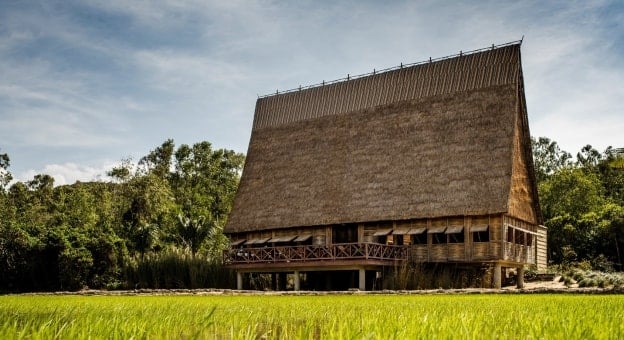
Zannier Hotels Bai San Ho (Phu Yen) recreates the indigenous pattern system through contemporary architectural language.
The beauty of the building lies not only in its shape, but also in every detail, evoking cultural depth and community memories.
When stylized into a design language, patterns help the architecture blend with the surrounding landscape while telling the story of history, customs and lifestyle typical of the land.
It is this subtle blend that turns each resort space into a “living story” - where visitors not only “stay” but also “experience” the culture.
For international visitors, it is a subtle way to touch the Vietnamese spirit; for the local community, it is a source of pride when cultural heritage is honored.
However, if implemented superficially, the arbitrary use of ethnic patterns can easily turn into cultural appropriation, fading original values and community memories.
Therefore, investors and architects must view patterns as a living cultural asset, not just a decorative material.
Only by spending adequate time on in-depth research, working closely with experts, artisans and the local community, can we create resorts that are not only beautiful in form, but also sustainable in value, and at the same time become true symbols of identity and heritage.
Source: https://baodanang.vn/ban-sac-dan-toc-trong-khong-gian-nghi-duong-3305636.html



![[Photo] Super harvest moon shines brightly on Mid-Autumn Festival night around the world](https://vphoto.vietnam.vn/thumb/1200x675/vietnam/resource/IMAGE/2025/10/07/1759816565798_1759814567021-jpg.webp)






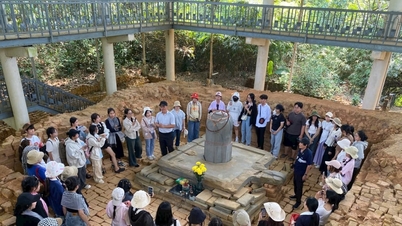

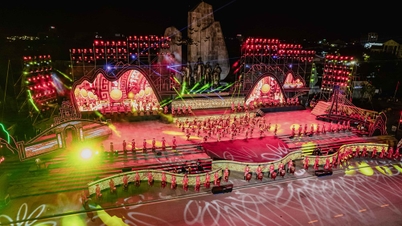
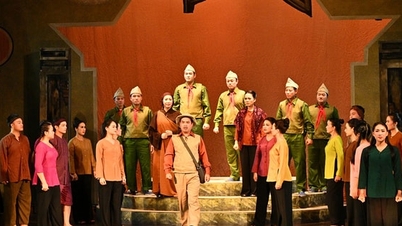

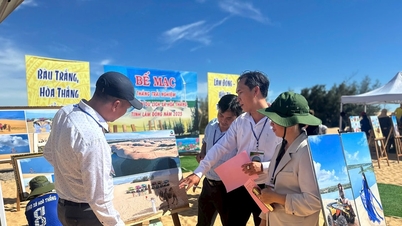
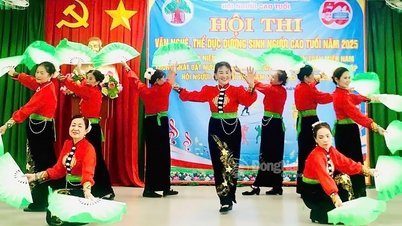





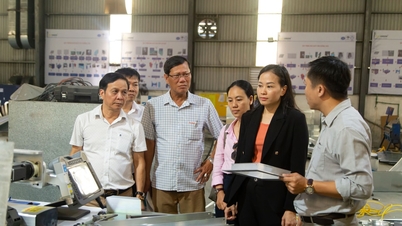









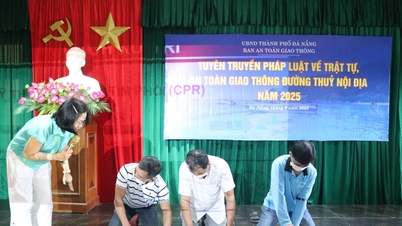




































































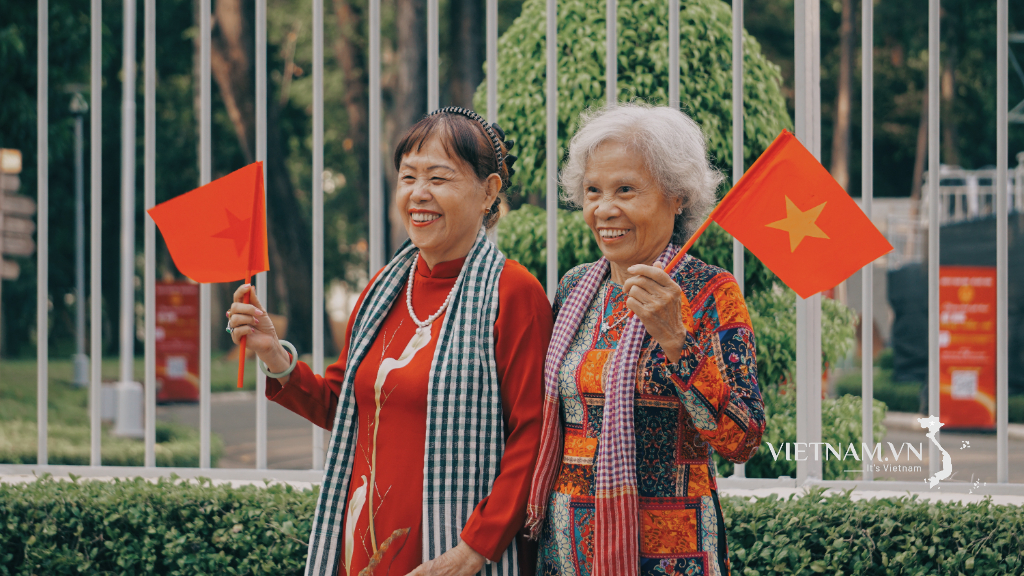

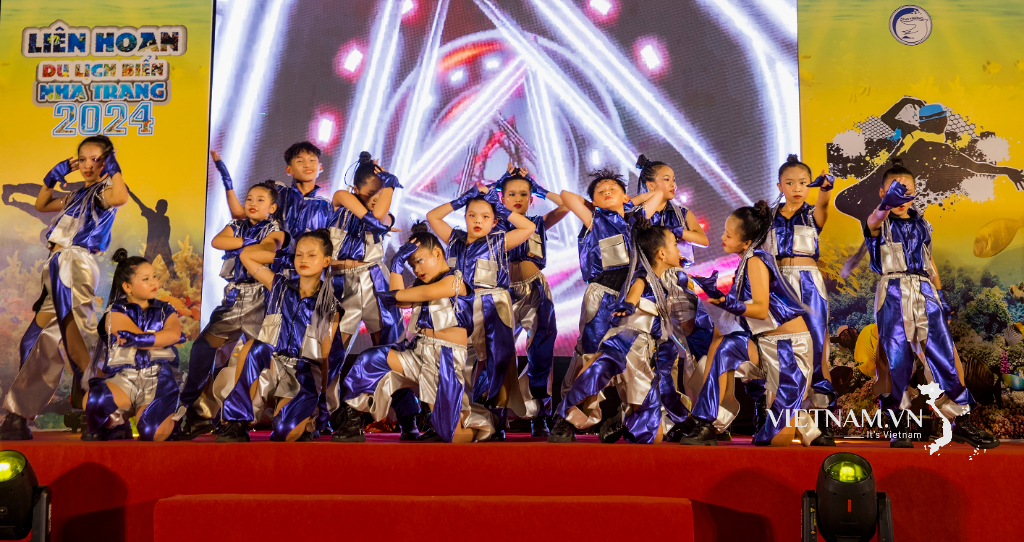

Comment (0)